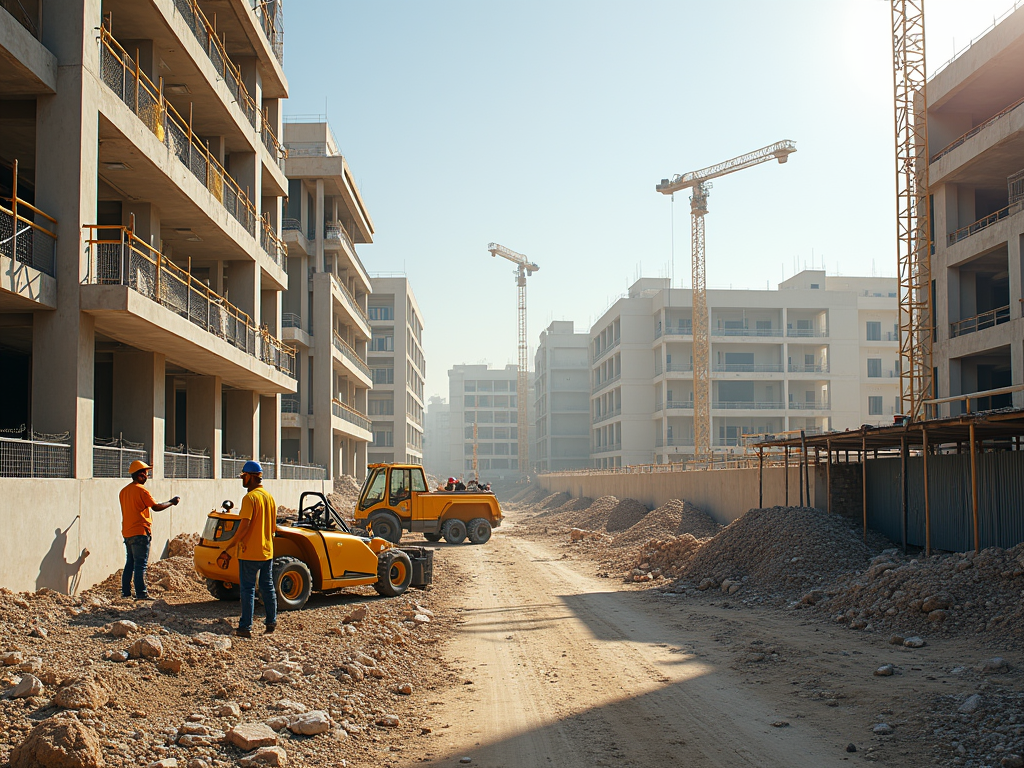Dubai’s real estate market has long been a focal point for investors and homebuyers alike, raising questions about its current state. As of late 2023, the consensus leans towards a recognition of oversupply in certain segments of the market, particularly in luxury and high-rise residential properties. This article will delve into the underlying factors contributing to this situation, examine current market trends, and discuss the implications for potential investors and developers.
Understanding the Market Dynamics

To assess whether Dubai’s real estate market is oversupplied, it is essential first to understand the dynamics of supply and demand. The city experienced a significant construction boom, particularly from 2010 to 2015, driven by an influx of population and investment. This surge led to numerous real estate projects, including residential towers, commercial spaces, and mixed-use developments. However, several factors have contributed to a shift in market dynamics:
- Economic fluctuations affecting buyer confidence.
- Changes in governmental policies and regulations impacting foreign investment.
- Increased inventory due to ongoing construction projects.
- Shifts in consumer preferences towards more affordable housing options.
As a result, an imbalance between supply and demand is becoming apparent in certain sectors, making it crucial for investors to reassess their strategies.
Factors Influencing Oversupply

Several key factors contribute to the perceived oversupply in Dubai’s real estate market. Understanding these can provide insights into future trends and potential investment opportunities:
- Economic Environment: The fluctuating economy, exacerbated by recent global events, has led to a contraction in demand.
- Population Growth: While Dubai is a magnet for expatriates, the rate of growth has slowed, resulting in fewer new residents purchasing homes.
- Regulatory Changes: Policy shifts, including those related to visa regulations for foreign workers, can impact the demand for housing.
- Developer Confidence: High levels of confidence have led developers to build more properties, even when demand appears weak.
- Market Saturation: In particular segments, such as the luxury market, the saturation of available properties has increased considerably.
Each of these factors plays a significant role in creating a scenario where supply may exceed demand, leading to potential oversupply levels.
Different segments of the real estate market in Dubai exhibit varying levels of oversupply. Understanding where the most significant imbalances occur is vital for investors. Common areas affected include:
- Luxury Residences: A surge in luxury developments has led to an abundance of high-end options, often taxing upper-tier demand.
- High-rise Apartments: While popular, the number of high-rise units available has eclipsed occupancy rates.
- Commercial Spaces: Retail and office spaces continue to see high vacancy rates, contributing to a broader oversupply issue.
- Affordable Housing: Despite an overall oversupply, the demand for affordable housing remains high, indicating missed opportunities in this segment.
By focusing on these areas, investors can better strategize their entry into the market and mitigate risks associated with oversupply.
Investor Considerations Amid Oversupply
Navigating an oversupplied market can be complex, but investors can take proactive steps to mitigate risks and capitalize on opportunities. Consider the following strategies:
- Market Research: Conduct thorough research to identify promising areas less affected by oversupply.
- Diverse Portfolios: Diversify investments across different types of properties to reduce sector-specific risks.
- Timing Purchases: Consider waiting for market corrections to purchase properties at lower prices.
- Leverage Financing: Use financing options wisely to ensure cash flow remains steady during turbulent market periods.
- Engage with Local Experts: Work with experienced local agents who understand market trends and can provide valuable insights.
By employing these strategies, investors can position themselves favorably despite the challenges presented by an oversupplied market.
Conclusion
In conclusion, while Dubai’s real estate market faces challenges related to oversupply, there are still promising opportunities for astute investors who understand the market dynamics. By analyzing supply and demand, recognizing key sectors experiencing oversupply, and employing strategic investment practices, individuals can navigate the complexities of this vibrant market. As Dubai continues to evolve, staying informed and adaptable will be crucial in making sound investment decisions.
Frequently Asked Questions
1. What causes oversupply in Dubai’s real estate market?
Oversupply can result from a combination of factors, including economic fluctuations, regulatory changes, high levels of new construction, and shifts in consumer preferences.
2. Which real estate segments are most affected by oversupply?
Luxury residences, high-rise apartments, and commercial spaces show significant signs of oversupply, while there remains strong demand for affordable housing options.
3. How can investors navigate an oversupplied market?
Investors can mitigate risks by conducting thorough market research, diversifying investment portfolios, timing their purchases, leveraging financing wisely, and collaborating with local experts.
4. Is now a good time to invest in Dubai real estate?
Investing in Dubai real estate can still be appealing, especially in less impacted segments, but it requires careful analysis and an understanding of market trends.
5. What should buyers look for in an oversupplied market?
Buyers should focus on areas with strong demand, stable growth potential, and properties that offer value, especially in the affordable housing sector.
